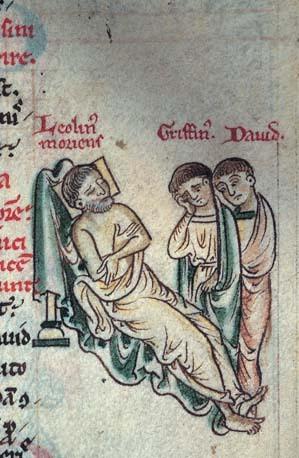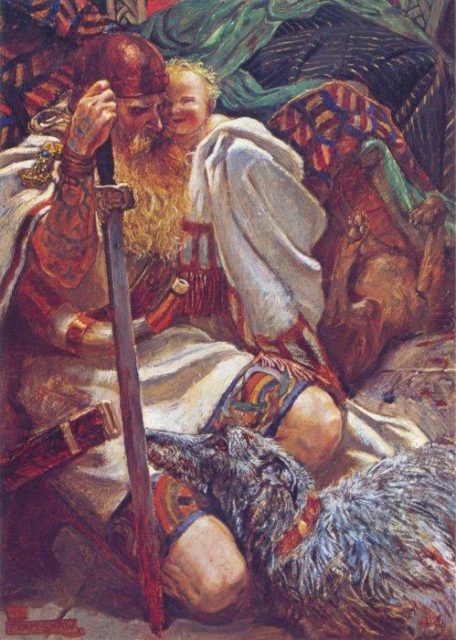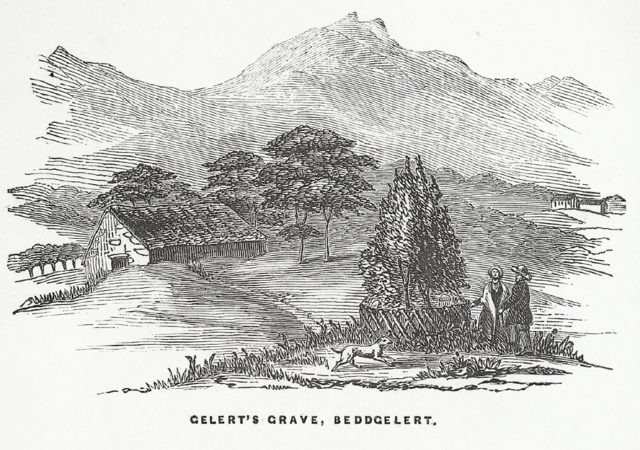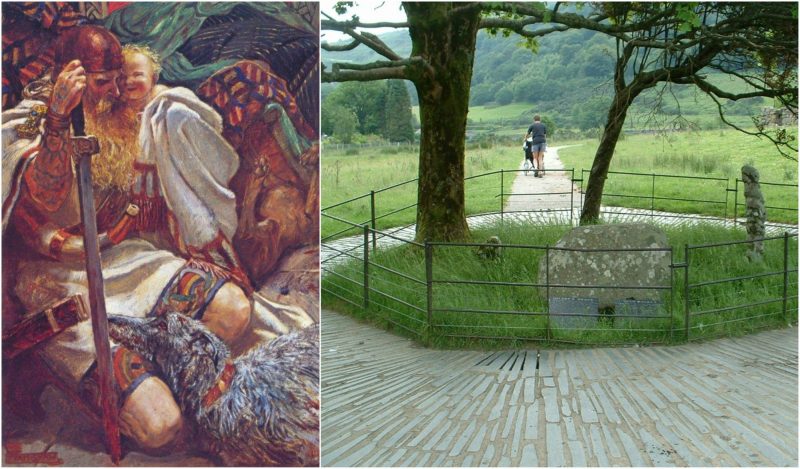This story is more fiction than fact. However, it has an excellent moral point to make. The main character here is Gelert, a legendary hound that allegedly belonged to Llywelyn the Great (Llywelyn ab Iorwerth), Prince of Gwynedd in north Wales. He later became the King of Wales. The tale of Gelert is usually associated with the village of Beddgelert in the Snowdonia area of Gwynedd. One of the translations of the name of this village is “Gelert’s Grave.”

According to the widely accepted version of the story, Gelert was given to Llywelyn by King John of England as a gift. One day, Llywelyn went to his palace near Beddgelert with Gelert and his baby son. He then went hunting and left the hound and the baby alone in the house. When he returned, he saw a dreadful scene. The cradle was overturned, the child was missing, and Gelert stood there smeared with blood. The furious Prince drew his sword and killed the dog, thinking that he murdered his child.
While Gelert was dying, Llywelyn heard his son crying from behind the cradle. He found the child unharmed, sitting next to a dead wolf that attacked him. It turned out that Gelert protected the child and killed the wolf. Llywelyn realized what he had done and was overcome with sadness. After the tragic event, he buried the dog with a great ceremony, but he could still hear his dying yelp. It is said that Llywelyn never smiled again. The story says that he buried Gelert on a mound in the village he named Beddgelert. His grave can still be seen there today.

Unfortunately, according to historians, these events never actually happened. In fact, the old legend was used to promote tourism in the area of Beddgelert. Today, it is widely accepted that the village was named after a saint named Cilert (or Celert), an early Christian missionary and leader, who settled here early in the 8th century. The place was associated with the hound much later, in 1793, when a man called David Pritchard moved to the village and bought the Royal Goat Inn (now the Royal Goat Hotel).
Pritchard heard about an old local legend about a dog called Cilhart, dating from the 15th century. In that legend, the dog died from exhaustion after a long hunt. After it had died, it was buried in Beddgelert. He then got the idea to merge this legend with the story about the king and his courageous dog. Pritchard also invented the name Gelert, in order to fit the village name. He thought that this little trick would bring him more money at the inn. And he was right. People from the whole country started to show up in Beddgelert to see the grave of the famous dog. And instead of an ancient memorial placed there by Prince Llywelyn, they saw the one that Pritchard built.

David Pritchard probably chose Llywelyn as a character in his story, because he was historically connected with the nearby Abbey. Llywelyn was also one of the greatest Welsh kings and gave the story more credibility. It is likely that the King owned hunting dogs (greyhounds or Irish Wolfhounds), but besides this, there is no real evidence that he actually killed a dog named Gelert as described above.
The motif of the “faithful hound unjustly killed by his master” has been around since ancient times. It appears in the lore of many people around the world, in slightly different versions. For example, in the Alpine Ligurian poem called “R sacrifisi dr can,” a shepherd killed his dog after he found it covered with blood, but he later found a dead wolf in the sheepfold. In an old Indian legend, the dog is replaced by a mongoose, and the wolf by a black snake. In an Egyptian folktale, a cook nearly killed the dog Wali for smashing a bowl of herbs, but then he found out that there was a poisonous snake inside.
Probably the most similar is a Malaysian story in which a tamed bear belonging to a hunter was left to guard his daughter. When he returned home, his daughter was gone and the bear covered with blood. The hunter hastily killed the bear, but later found a dead tiger, while his daughter emerged from the jungle.
Whether they are true or not, this kind of legends has always managed to overwhelm people with strong feelings: feelings of injustice, repentance, and grief. These are all feelings that we can identify with personally. This story shows the core of these emotions. It teaches people that hasty actions can lead to undesirable consequences. Ultimately, this tale confirms the primary principle of justice: “‘innocent until proven guilty.’”

Gelert probably didn’t exist, but still, thousands of people visit his grave even today. There is no historical artifact there, but there is a valuable lesson to be learned: don’t make rash decisions. Two memorial stones on the supposed grave of Gelert, one written in Welsh and one in English, tell the tragic story.
